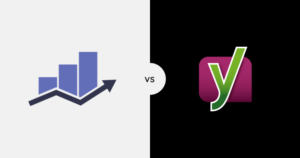Start WordPress Website, blog is exciting but can feel a bit overwhelming if you’re unsure where to begin. Don’t worry—you’re in the right place! WordPress is one of the most popular platforms for bloggers and website owners for good reason. It’s user-friendly, super flexible, and packed with customization options. In this guide, I’ll walk you through everything you need to know about setting up your WordPress website, tweaking important settings, and using SEO tools to grow your blog.
Getting Started with Your WordPress Website
Let’s start with the basics of what you’ll need to set up your WordPress blog.
Pick a Domain Name (It’s Your Blog’s Identity)
Think of your domain name as your blog’s home address. It’s how people find you online, so make it something simple, catchy, and relevant to your niche. For example, if you’re starting a food blog, something like TastyBites.com works much better than a long, confusing name. Sites like Namecheap or GoDaddy can help you find and register the perfect domain name in minutes

Choose a Hosting Provider (Your Blog’s Storage Space)
Web hosting is where all your blog’s content, images, and files live. You’ll want a reliable provider that offers speed, security, and great support. Hosting companies like Bluehost, SiteGround, and HostGator are top picks for WordPress beginners. Look for features like free SSL certificates (for that secure “lock” symbol in your URL) and one-click WordPress installation to save yourself time.
Install WordPress (No Tech Wizardry Needed!)
Don’t panic—installing WordPress is easier than you think. Most hosting providers offer a one-click installation process. Once it’s set up, you can log in to your WordPress dashboard. This is where you’ll design your blog, write posts, and tweak settings.
Select a Professional Theme (Your Blog’s Style)
Your WordPress theme controls your blog’s design and layout. Choose a clean, mobile-friendly theme that looks great on all devices. Free themes like Astra or OceanWP are great starting points. If you’re ready to invest in a premium theme, options like Divi or GeneratePress offer more customization.
Install Must-Have Plugins (Tools to Power Up Your Blog)
Plugins are like apps for your WordPress site—they add functionality and features. Here are a few must-haves:
- Yoast SEO: Simplifies search engine optimization.
- Akismet: Blocks spammy comments.
- Elementor: Makes designing pages super easy.
- WP Super Cache: Speeds up your website.
Tweak These Important Blog Settings
After setting up WordPress, a few adjustments can make a big difference.
Add a Catchy Site Title and Tagline
Your site title and tagline should tell people what your blog is about. You can update these under Settings > General. For example, if your blog is about fitness, your tagline might be “Tips and Tricks to Stay Fit Every Day.”
Make Your URLs SEO-Friendly (Permalinks)
By default, WordPress generates some pretty messy URLs. Clean them up for SEO by setting permalinks to “Post name” under Settings > Permalinks. This way, your blog post about “Best Travel Destinations” will have a neat URL like yourblog.com/best-travel-destinations instead of random numbers.
Create Must-Have Pages
Before diving into blogging, create essential pages that every site needs:
- About Page: Share who you are and why you started the blog.
- Contact Page: Make it easy for readers to reach out.
- Privacy Policy: Required if you collect user data or run ads.
Customize Your Homepage
Decide if you want your homepage to display your latest posts or a static page. You can set this up under Settings > Reading.
Manage Comments to Prevent Spam
Comments can spark great discussions, but spam is inevitable. Head to Settings > Discussion to enable moderation so you approve comments before they appear.
The Best SEO Tools for WordPress Bloggers
Let’s face it—getting noticed online takes more than just great content. These SEO tools can help you climb the rankings:
Yoast SEO
Yoast is perfect for beginners and pros alike. It helps you optimize your posts for keywords, improve readability, and even create XML sitemaps for search engines.
Rank Math
If you’re looking for a feature-packed alternative to Yoast, Rank Math is your best bet. It includes advanced options like keyword tracking and schema markup, all for free.
Google Analytics
Understand how people find and interact with your blog by connecting Google Analytics. It’s like having a crystal ball for your traffic stats!
Ahrefs and SEMrush
These tools are goldmines for keyword research, competitor analysis, and finding backlink opportunities. While they’re a bit pricey, they’re invaluable for serious bloggers.
SEO Tips to Help Your Blog Shine
Once your blog is live, these tips will help you optimize it for search engines:
Pick a Mobile-Friendly Theme
With most web traffic coming from mobile devices, a responsive theme is non-negotiable.
Optimize Your Images
Large image files slow your site down, which hurts both user experience and SEO. Compress images using tools like TinyPNG or plugins like Smush.
Link to Other Blog Posts (Internal Linking)
Adding links to related posts keeps readers on your site longer and improves your SEO rankings.
Write Killer Meta Descriptions
Meta descriptions appear in search results. Use them to grab attention and include your target keyword naturally.
Boost Speed with Caching Plugins
A fast website keeps visitors happy and ranks better on Google. Plugins like WP Rocket can turbocharge your site.
How to Monetize Your Blog
Ready to turn your blog into a money-making machine? Here’s how:
Google AdSense
Display targeted ads on your site and earn money when readers click on them.
Affiliate Marketing
Recommend products or services to your audience and earn a commission on sales through your unique links.
Sponsored Posts
Work with brands to create paid content that fits your blog’s niche.
FAQs
How do I choose the best hosting provider?
Look for speed, reliability, and great features like free SSL and backups. Bluehost and SiteGround are excellent choices.
Which is better: Yoast or Rank Math?
Yoast is user-friendly, while Rank Math offers more advanced features. It depends on your blogging goals.
Can I start a WordPress site for free?
Yes! But investing in a custom domain and hosting gives you more control and a professional edge.
How can I make my blog mobile-friendly?
Pick a responsive theme and test it on various devices to ensure it looks great everywhere.
What are the best SEO practices for blogging?
Focus on keywords, write engaging headlines, and use internal links to guide readers through your content.
How do I integrate social media with my blog?
Install plugins like Social Snap or Jetpack to add sharing buttons and auto-post features.
Conclusion
Starting a WordPress blog doesn’t have to be complicated or intimidating. By following this guide, you’ll be ready to launch a beautiful, SEO-friendly blog that stands out. Whether it’s choosing the right tools, optimizing for search engines, or monetizing your site, you’ve got this! Happy blogging!
Pro Tip: Bookmark this guide so you can refer back to it whenever you need help setting up or growing your WordPress blog.





I’ve read several posts on this topic, but yours stands out for its clarity and actionable advice. Thank you for putting in the effort to create such a helpful resource. Can’t wait to share this with my network!
Thank you so much ❤️
What an amazing read! Your detailed approach and clear explanations make this post incredibly helpful. Keep sharing such great content!
This is exactly the kind of information I was looking for. Your detailed approach and clear explanations make a huge difference. Thanks for sharing!
Your ability to explain things in such an engaging and easy-to-digest manner is remarkable. I really appreciate the effort you put into this post!